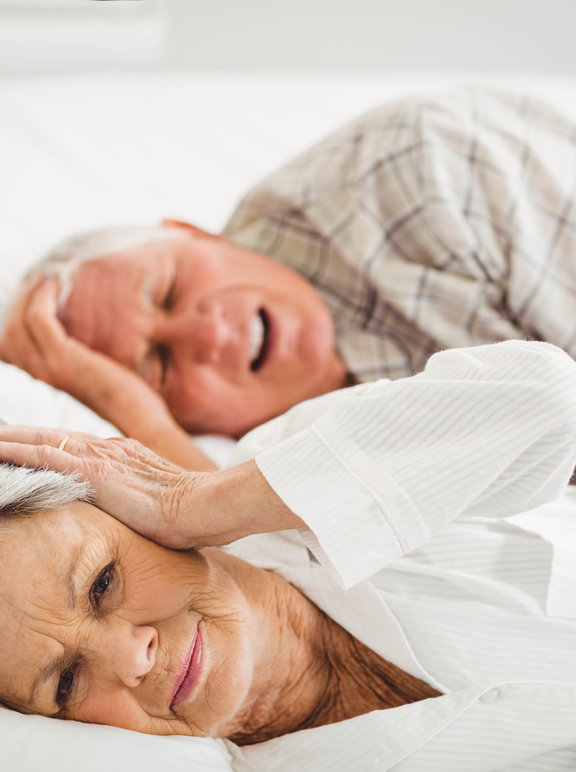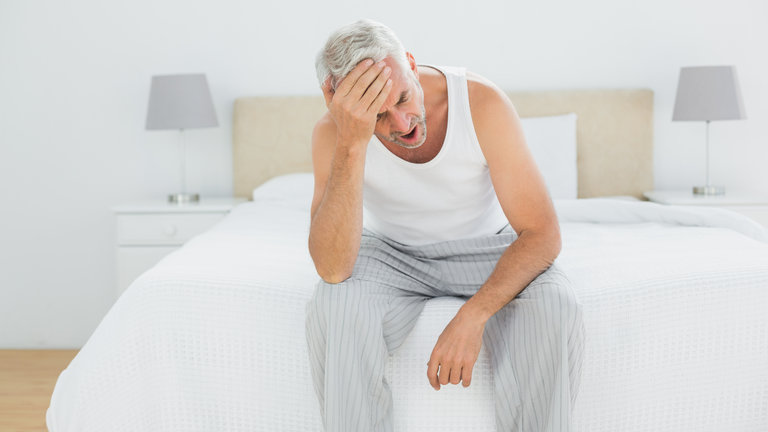What is sleep apnea
If you have exhausted patients, their partners complain about their snoring, or they’re falling asleep at work or while driving, they may have sleep apnea. Early intervention could improve their relationships or save lives
What is sleep apnea?
Sleep apnea (also known as sleep apnoea) is a dyssomnia caused by the pharyngeal muscles relaxing during deep sleep and collapsing into patient’s airway, causing the patient to snore, stop breathing, jerk awake a little, then fall asleep again. The patient usually wakes exhausted from lack of sleep and oxygen.
The patient may not know they suffer from sleep apnea because 80% of the people with the condition are believed to be undiagnosed1. Up to 6% of the population suffers from sleep apnea2,3 – increasing to 77% in obese people4.
There are three types of sleep apnea
- Obstructive sleep apnea (OSA) – the most common – where relaxation of the pharyngeal muscles interferes with the airway, causing breathing to stop
- Central sleep apnea – which is not as common as OSA – where the brain or nerves fail to trigger the breathing muscles to breathe
- Combination, or complex sleep apnea, where obstructive and central sleep apnea occur together
Relative severities of sleep apnea
The physiological process of sleep apnea – the closing of the airway, waking, breathing, etc. – is normal when it happens infrequently. However, a cycle of more than five times per hour indicates sleep apnea:
| Normal | Fewer than 5 interruption per hour |
| Mild sleep apnea | Between 5 and 15 interruptions per hour |
| Moderate sleep apnea | 15 to 30 interruptions per hour |
| Severe sleep apnea | More than 30 interruption per hour |
Affected populations
Sleep apnea can occur in all age groups and body morphologies but there are several factors that dramatically increase the likelihood of sleep apnea:
- Obesity – around 77% of obese patients suffer from sleep apnea4
- Advanced age – sleep apnea is more likely in populations over 50 years old
- Thyroid conditions or goitre that constrict the neck or airway
- Physical characteristics of the throat such as enlarged tonsils, and a small airway or nasal passages
- Ingestion of alcohol, sedatives or sleeping pills before bed
Symptoms
Identifying the presence of two or three of the common symptoms of sleep apnea indicates that a sleep test may be an appropriate next step in the diagnosis. Symptoms include5:
- Snoring – many sleep apnea patients are referred to the doctor because their snoring keeps their partners awake
- Feeling sleepy during the day – some people seek treatment after they have fallen asleep while driving or at work
- Poor concentration
- Feeling irritable or moody
- Suffering from a reduced sex drive or erectile dysfunction
- Frequent urination at night
- Nightmares
Co-morbidities
Co-morbidities of sleep apnea include:
- Poor cardiovascular health6,7
- Hypertension8,9
- Stroke9
- Type 2 diabetes10,11,12,13
References
References:
- Obsructive sleep apnea – a guide for GP’s, British Lung Foundation (NHS)
- O’Keefe, et.al., Evidence supporting routine Polysomnography before bariatric surgery, in,Obesity Surgery, January 2014
- Chronic respiratory diseases, The World Health Organizaton, www.who.int/gard/publicaitons/chronic_respiratory_diseases.pdf viewed 21 May 2015
- Sleep breathing disorders, in, European Respiratory Society Whitebook, Chapter 23
- Patient information series – Sleep mini series #4, in, Obstructive Sleep Apnea and Heart Disease, American Throacici Society
- Logan, et.al.High prevalence of unrecognized sleep apnoea in drug-resistant hypertention, in, Journal of Hypertension, 2001
- Einhorn, et.al., Prevalence of sleep apnea in a population of adults with type 2 diabetes Mellitus, in, Endocrine Practice, 2007; 13(4):355-362
- Peppard PE, Young T, Palta M, Skatrud J (2000): Prospective study of the association between sleep-disordered breathing and hypertension. NEJM 342(19): 1378-1384
- Logan, et.al.High prevalence of unrecognized sleep apnoea in drug-resistant hypertention, in, Journal of Hypertension, 2001
- Einhorn, et.al., Prevalence of sleep apnea in a population of adults with type 2 diabetes Mellitus, in, Endocrine Practice, 2007; 13(4):355-362
- Meslier N, Gagnadoux F, Giraud P, Person C, Ouksel H, Urban T, Racineux JL (2003): Impaired glucose-insulin metabolism in males with obstructive sleep apnoea syndrome. Eur Respir J 22(1): 156-160
- Bottini P, Dottorini ML, Cristina Cordoni M, Casucci G, Tantucci C (2003): Sleep-disordered breathing in nonobese diabetic subjects with autonomic neuropathy. Eur Respir J 22: 654- 660
- Elmasry A, Lindberg E, Berne C, Janson C, Gislason T, Awad Tageldin M, Boman G (2001): Sleep-disordered breathing and glucose metabolism in hypertensive men: a population-based study. J Intern Med 249(2): 153-161

